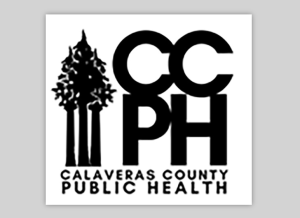San Andreas, CA — Due to an increased number of Bird Flu cases in the state, Governor Gavin Newsom recently signed a State of Emergency declaration.
California is one of seven states in the United States reporting cases of the virus in both dairy cattle and humans. There have been 34 confirmed cases in California, but none, to this point, in the Mother Lode. Being vigilant is a key to stopping any early outbreaks.
Calaveras County Agricultural Commissioner, Jesse Fowler, says, “Poultry owners should be aware of the signs of Bird Flu in their flocks. Reporting suspected illnesses early is key to safeguarding our local food supply and protecting agricultural producers.”
Information from the Calaveras County Public Health Department is below:
Bird Flu in Animals
Bird Flu can spread among birds (poultry), cattle, humans, and other mammals, such as cats. The virus spreads through droplets or particles of animal feces (manure), raw milk, and saliva (spit).
Symptoms in Animals:
• Cats: fever, decreased energy, low appetite, tremors, seizures, incoordination, blindness, nasal discharge, coughing or sneezing, lethargy, and eye discharge (conjunctivitis)
• Cattle: low appetite, reduced milk production, and abnormal appearance of milk (thickened, discolored)
• Poultry: sudden death, trouble breathing, clear runny discharge (from nose, mouth, and eyes), lethargy, low appetite swelling (eyes, head, wattles, or combs), discolored or bruised comb, wattles, or legs, stumbling/falling, or a twisted neck
Prevention for Animals:
• Use recommended biosecurity methods: Poultry owners in California are strongly encouraged to protect their flocks by increasing their biosecurity practices. Visit CDFA and USDA for best practices.
• Report unusual or suspicious illnesses or deaths: Poultry owners should call the CDFA Sick Bird Hotline at 866-922-BIRD (2473).
• Prevent animal contact with wild birds: Use barriers to prevent direct contact with wild birds and other animals infected with or suspected to have Bird Flu. Wild birds can be infected with Bird Flu even if they don’t look sick.
• Avoid raw milk products: Do not feed pets or animals raw milk or raw milk products, especially from animals with confirmed or suspected Bird Flu infection.

